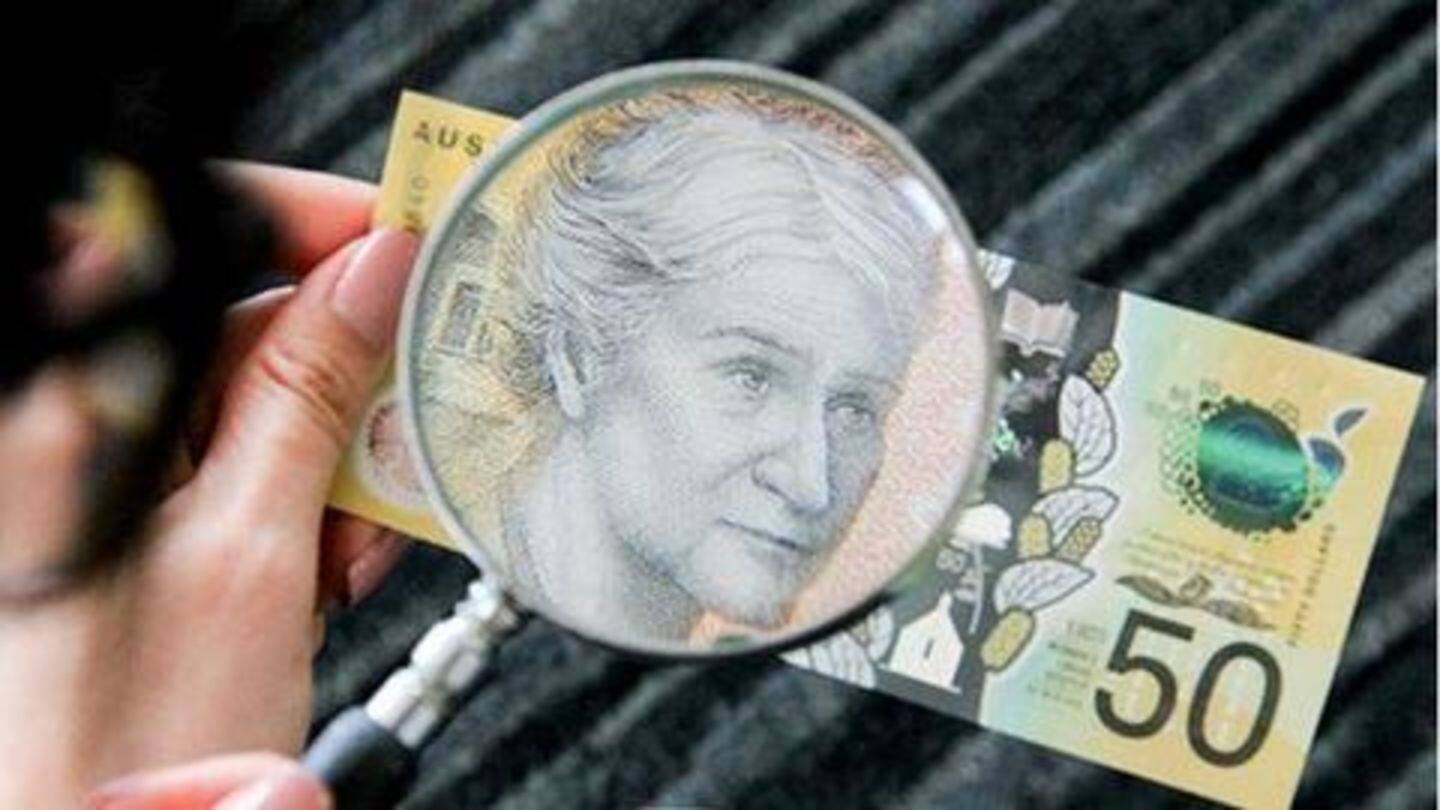
46 million Australian $50 banknotes have typos, they're worth $2.3bn
What's the story
In October last year, the Reserve Bank of Australia had started rolling out these "new and improved" $50 banknotes, which were reportedly designed to improve accessibility and reduce counterfeiting. But as it turns out, they did not do a very thorough job. Apparently, the Reserve Bank made a huge typographical error in the text printed on the notes. Read on to find out more.
Details
Always. Read. The. Small. Print.
Okay, so the huge error is actually pretty small if you take it literally. The note features the faces of David Unaipon, an indigenous writer and inventor, and Edith Cowan, the first female member of the Australian Parliament. Right above where Cowan shoulder is on the note, the RBA printed her first speech to the Parliament in micro-text, which contains the typo misspelling 'responsibility'.
Discovery
Whose 'responsibilty' is it to look for typos?!
"It is a great responsibilty [sic] to be the only woman here, and I want to emphasise the necessity which exists for other women being here," reads the banknote. The error was reportedly spotted by a listener of radio station Triple M, who later sent a magnified photo to them. Triple M posted the picture on their Instagram on Thursday.
Instagram Post
Here's the picture posted by Triple M radio
Information
About 46 million notes in circulation bear the typo
Reportedly there are about 46 million of these $50 banknotes that are currently in circulation across the country bearing the typographical error. Well, if you run the math, that's worth $2.3 billion (equivalent to Rs. 11,242 crore). And that's why, kids, we value editors.
Response
Reserve Bank took 'responsibilty' (we'll stop with the puns now)
The RBA confirmed yesterday that the error is, in fact, legitimate, and will be corrected soon. "The Reserve Bank of Australia is aware of it and the spelling will be corrected at the next print run," said a bank spokesperson. Reportedly, updated $5 and $10 notes are already in circulation, and new $20 banknotes will hit the streets in October this year.
Backstory
Australia introduced polymer banknotes in 1988, first to do so
Australia was also the first country to switch to polymer banknotes back in 1988. Apart from the durability factor, polymer makes it easier to include features to aid the visually-impaired. The $50 banknote has four raised bumps on each long edge. Additionally, the note also has several features such as the rolling color effect, microprint, reversing number, etc., to tackle counterfeiting.